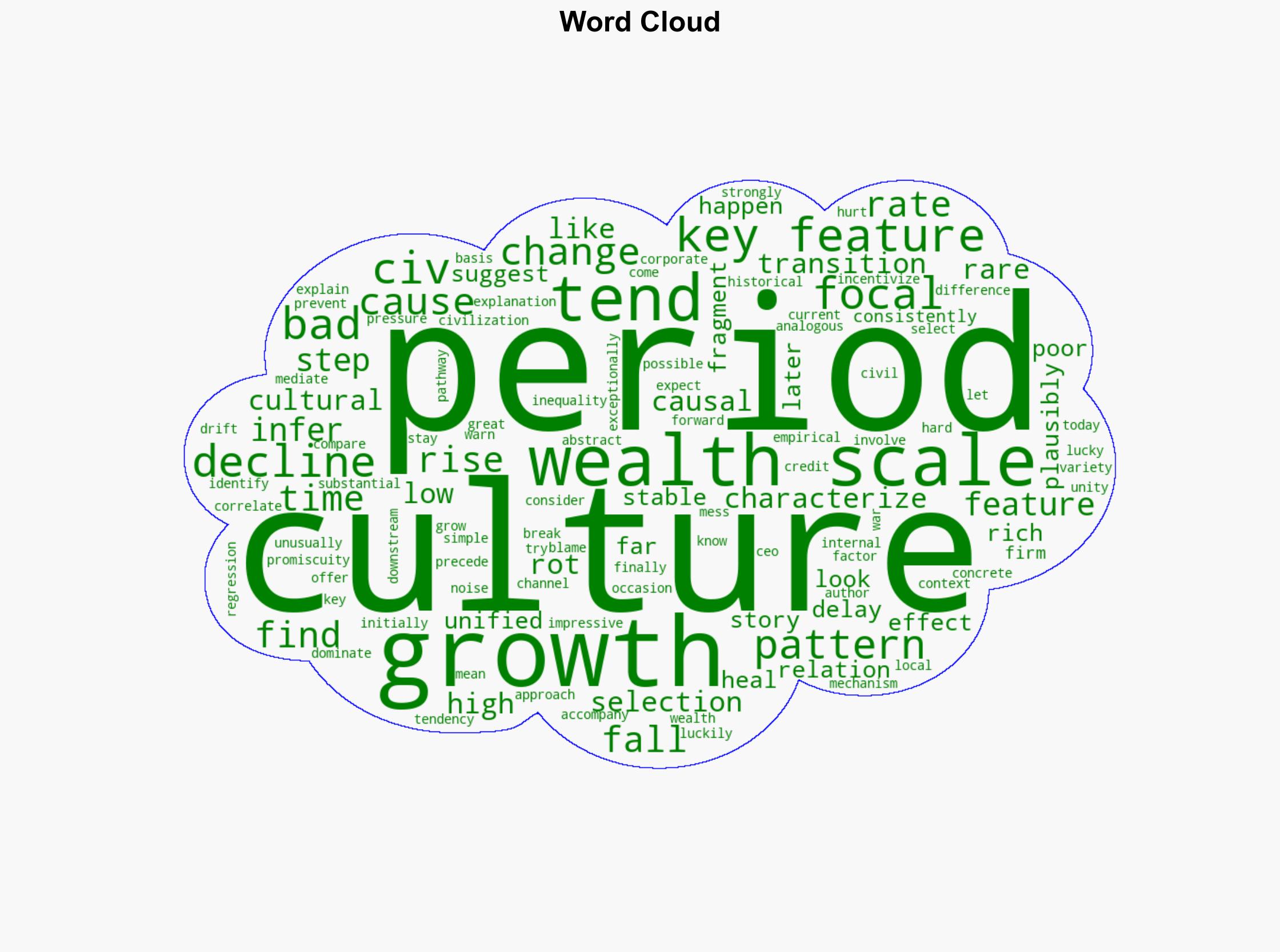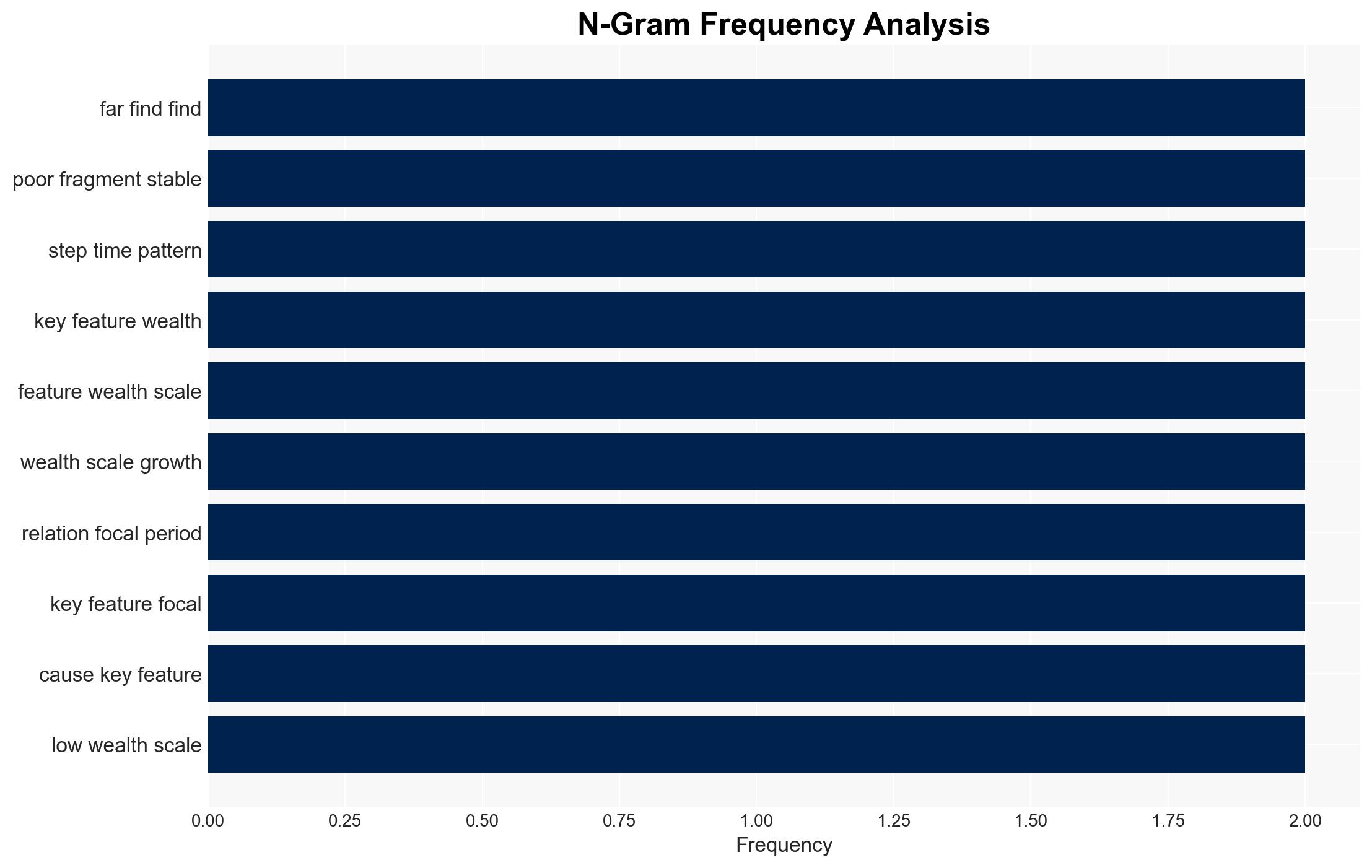Civs Rot – Overcomingbias.com
Published on: 2025-11-13
AI-powered OSINT brief from verified open sources. Automated NLP signal extraction with human verification. See our Methodology and Why WorldWideWatchers.
Intelligence Report: Civs Rot – Overcomingbias.com
1. BLUF (Bottom Line Up Front)
The most supported hypothesis suggests that the decline of civilizations is primarily driven by cultural degradation and a lack of adaptive capacity in the face of changing wealth scales and growth patterns. This analysis is assessed with moderate confidence due to the complexity and variability of historical data. Strategic recommendations include fostering cultural resilience and adaptability to mitigate potential decline.
2. Competing Hypotheses
Hypothesis 1: The decline of civilizations is primarily due to cultural degradation, which is exacerbated by high wealth scales and a lack of cultural adaptability.
Hypothesis 2: The decline is primarily driven by external factors such as economic shocks or political instability, with cultural factors playing a secondary role.
Hypothesis 1 is more likely given the structured analytic reasoning presented in the source text, which emphasizes the correlation between cultural factors and the rise and fall of civilizations. However, the complexity of historical events and the potential for external shocks necessitate consideration of Hypothesis 2.
3. Key Assumptions and Red Flags
Assumptions: The analysis assumes a direct causal relationship between cultural factors and the decline of civilizations, which may oversimplify complex historical dynamics. It also assumes that historical patterns are applicable to contemporary civilizations.
Red Flags: Potential bias in attributing decline primarily to cultural factors without sufficient consideration of external influences. The analysis may overlook the role of technological and geopolitical changes.
4. Implications and Strategic Risks
The primary risk is the potential for cultural stagnation leading to a decline in societal cohesion and economic performance. This could result in increased political instability and vulnerability to external threats. Escalation scenarios include economic downturns exacerbating cultural divides, leading to civil unrest or conflict.
5. Recommendations and Outlook
- Actionable Steps: Encourage policies that promote cultural adaptability and resilience, such as education reform and support for cultural innovation.
- Best Scenario: Successful adaptation leads to renewed growth and stability.
- Worst Scenario: Cultural stagnation results in economic decline and increased conflict.
- Most-likely Scenario: Gradual adaptation with intermittent challenges, requiring ongoing strategic adjustments.
6. Key Individuals and Entities
No specific individuals are mentioned in the source text. Entities of interest include cultural institutions and government bodies responsible for education and cultural policy.
7. Thematic Tags
National Security Threats, Cultural Resilience, Economic Stability, Political Stability
Structured Analytic Techniques Applied
- Cognitive Bias Stress Test: Expose and correct potential biases in assessments through red-teaming and structured challenge.
- Bayesian Scenario Modeling: Use probabilistic forecasting for conflict trajectories or escalation likelihood.
- Network Influence Mapping: Map relationships between state and non-state actors for impact estimation.
Explore more:
National Security Threats Briefs ·
Daily Summary ·
Methodology





